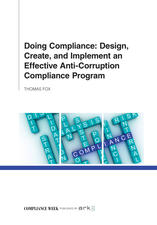 Commentators still level the hue and cry that it is somehow the fault of the Department of Justice (DOJ) and Securities and Exchange Commission (SEC) that companies continue to violate the Foreign Corrupt Practices Act (FCPA). Things would improve if only the DOJ and SEC would (1) prosecute companies more aggressively; (2) prosecute companies less aggressively; (3) make an example of ‘rogue’ employees who violate their corporate overseers pronouncements not to violate the law; (4) prosecute more corporate executives to ‘send a message’; (5) amend and clarify the FCPA because the concept of do not pay bribes is somehow too complicated for mere mortals to understand; (6) implement a compliance defense because apparently the DOJ does not consider that enough in any decision to prosecute; and/or (7) as The Donald desires, simply do away with the FCPA to restore the ability to pay a fair price for fair corruption.
Commentators still level the hue and cry that it is somehow the fault of the Department of Justice (DOJ) and Securities and Exchange Commission (SEC) that companies continue to violate the Foreign Corrupt Practices Act (FCPA). Things would improve if only the DOJ and SEC would (1) prosecute companies more aggressively; (2) prosecute companies less aggressively; (3) make an example of ‘rogue’ employees who violate their corporate overseers pronouncements not to violate the law; (4) prosecute more corporate executives to ‘send a message’; (5) amend and clarify the FCPA because the concept of do not pay bribes is somehow too complicated for mere mortals to understand; (6) implement a compliance defense because apparently the DOJ does not consider that enough in any decision to prosecute; and/or (7) as The Donald desires, simply do away with the FCPA to restore the ability to pay a fair price for fair corruption.
I thought about all of these varied and contradictory reasons when considering one of Shakespeare’s most enigmatic plays, Cymbeline. In an article in the Wall Street Journal (WSJ) entitled “The Long, Painful Drama of Self-Knowledge”, Stephen Smith considered the character Posthumus who was thought of as virtuous yet, through the crush of the plot, has his virtuous image shattered. Smith poses the question of “Why is Posthumus such a poor leader of himself, and a danger to others?” He answers his own question by saying, “The play suggests that his lack of self-knowledge, along with the flattery of his culture, make him overconfident.” In other words, he was human.
I thought about this analysis in the context of the recent accounting and financial scandal that engulfed the Toshiba Corporation in Japan. For those who did not follow the news, Toshiba announced last month that it had overstated its profits from 2008-2014 by over $1 billion dollars. This was in the face of the company having been publicly recognized for its good governance standards and practices. In an article in the Financial Times (FT), entitled “Japan Inc left shaken by Toshiba scandal”, Kana Inagaki reported, “On paper, it had a structure that gave its external directors the authority to many top executives and an auditing committee to monitor the behaviour of the company’s leaders. It was lauded for its efforts. In 2013, the group was ranked ninth out of 120 publicly traded Japanese companies with good governance practices in a list compiled by the “Japan Corporate Governance Network.””
But it was all a sham as it turned out that chairman of the audit committee was in on the fraud in addition to a plethora of top executives. Kota Ezawa, an analyst at Citigroup was quoted in the piece that “Toshiba was lauded as the frontrunner in governance efforts but that was a misunderstanding. Its governance structure looked good but the execution was not.” Ezawa further stated, “We need to make sure that companies understand that having structures is not enough.” So even a company with $52bn in annual sales must have more than a paper program.
For those who want to point to some defect in the Japanese corporate character, reminding us of the Olympus scandal from 2011, where successive corporate executives covered up long running accounting fraud, Andrew Hill, also writing for the FT in an article entitled “The universal dangers shown by Toshiba’s failings”, says not to point that self-righteous finger quite so quickly. He reminds readers of WorldCom from earlier this century. Being from Houston, I would remind readers of Enron and its accounting fraud as well. Hill cites to the work of Professor Michael Jones to identify four main types of accounting fraud, (1) increasing income, (2) decreasing expenses, (3) increasing assets, and (4) decreasing liabilities. Hill further notes that one common failing in all of these examples is the failure of internal controls. A second key failing is the “Unwillingness to challenge authority, a trait attributed to employees at Toshiba and Olympus — and often given an “only in Japan” spin — is a recurring problem everywhere, from Royal Bank of Scotland under Fred Goodwin to Fifa under Sepp Blatter.”
Hill’s explanation of the how and why of these accounting scandals is as age old as the time of Cymbaline. He wrote, “The most important lesson from Toshiba is about the malign impact of top-down pressure to meet unrealistic targets. Toshiba’s ex-chief executive denies having given direct instructions to staff to inflate profits. But the investigating panel said he told executives to “use every possible measure to achieve profitability” and added that Toshiba’s corporate culture did “not allow employees to go against the will of their superiors”.”
The lessons that Hill finds in the Toshiba accounting scandal are equally applicable to FCPA compliance and enforcement. It is not the DOJ or SEC’s “fault” when companies do not comply with the FCPA. It is up to the companies to which the law applies to comply with it. Make no mistake; it is quite simple not to pay bribes. One only has to wake up and say “I am not paying a bribe today, no matter what the economic benefit is to me”. Yet for a company, it is not easy because you have to not only put the appropriate controls in place, but you have to do compliance by ensuring these controls are executed upon. That was the failing of Toshiba, it had the controls in place but it did not execute on them.
I think this speaks directly as to why FCPA violations continue to occur and be prosecuted. Hill ended his piece by noting, “When aggressive targets, irresistible management pressure and weak controls coincide, misconduct can spread quickly. Rival companies see the inflated numbers and strain to match them. To suggest such weaknesses are confined to one corporate or national culture is a first step into dangerous complacency.” As long as humans are involved with corporations and there are incentives in place for more and greater sales, you will always have the motivation to cut corners and pay bribes. That impulse can be brought on by a bump in salary, a nice bonus, a promotion or sometimes simply keeping your job. That is why a compliance program must be put in place and those controls must be effective.
In Cymbeline the protagonist Posthumus learns that one key component of virtue is prudence. Near the end of his article on Shakespeare’s play Smith writes, “In his story, we glimpse one goal of Shakespearean drama: to help forge just such a character – an integrated human person capable of leading himself and others to peace, with the help of virtue.” For FCPA compliance, as long as there are incentives in place to make money, there will be people who cut corners by paying bribes. Yet companies can temper this by putting an effective compliance program in place and actually doing compliance. Much like Posthumus learns in Cymbeline it is one’s actions which lead to being virtuous; for a company, it is doing compliance that leads to it being called ethical.
This publication contains general information only and is based on the experiences and research of the author. The author is not, by means of this publication, rendering business, legal advice, or other professional advice or services. This publication is not a substitute for such legal advice or services, nor should it be used as a basis for any decision or action that may affect your business. Before making any decision or taking any action that may affect your business, you should consult a qualified legal advisor. The author, his affiliates, and related entities shall not be responsible for any loss sustained by any person or entity that relies on this publication. The Author gives his permission to link, post, distribute, or reference this article for any lawful purpose, provided attribution is made to the author. The author can be reached at tfox@tfoxlaw.com.
© Thomas R. Fox, 2015










